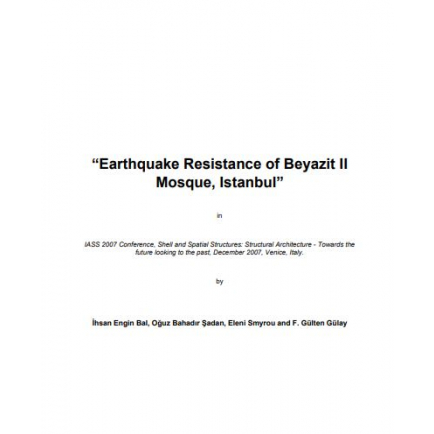
Earthquake Resistance of Beyazit II Mosque, Istanbul
Date Added
01/07/2022
Content Type
Documentary
Category
Researches
Link to Content
Subject Area
Mosques
Author
"hsan E. BAL
O. Bahadır ŞADAN
Eleni SMYROU
F. Gülten GÜLAY"
Publisher Name
IASS 2007 Conference
Year of Publication
2007
Description
Beyazit Mosque is a classical type Ottoman structure built between 1501 and 1506. Its original structural system is a
combination of Hagia Sophia consisting of four main arches and semi-domes, and Ottoman construction techniques. The
mosque contains four great brick and cut-stone composed arches springing from stone piers that offer primary support
for a central dome of 16.78m diameter and 36.5m height and two semi-domes. The mosque experienced a strong
earthquake just 3 years after its opening and was repaired immediately. After some strong earthquakes in the following
years, Sinan, known as the master of the Ottoman architecture, retrofitted the mosque by adding some external
jacketing to the columns, with anchorages and a modified cut-stone arch system. The importance of the mosque also
lies on the fact that it is the first mosque which was constructed with the same structural type (two semi-domes) as Hagia
Sophia after the conquest of the city in 1453.
In this paper, the intervention applied by Sinan has been investigated in detail. Additionally, in order to complete the 3D
elastic model of the monument, the effect of the additional arches and the column jacketing have been examined by
employing nonlinear analysis techniques. The conditions of the 1509 earthquake have been simulated by using a
reasonably similar scenario earthquake triggered by the Marmara segments of the North Anatolian Fault. The reasons
caused the partial collapse of the dome in 1509 and the effects of the retrofitting by Sinan to improve the stability of the
central dome and semi-domes have been examined.





